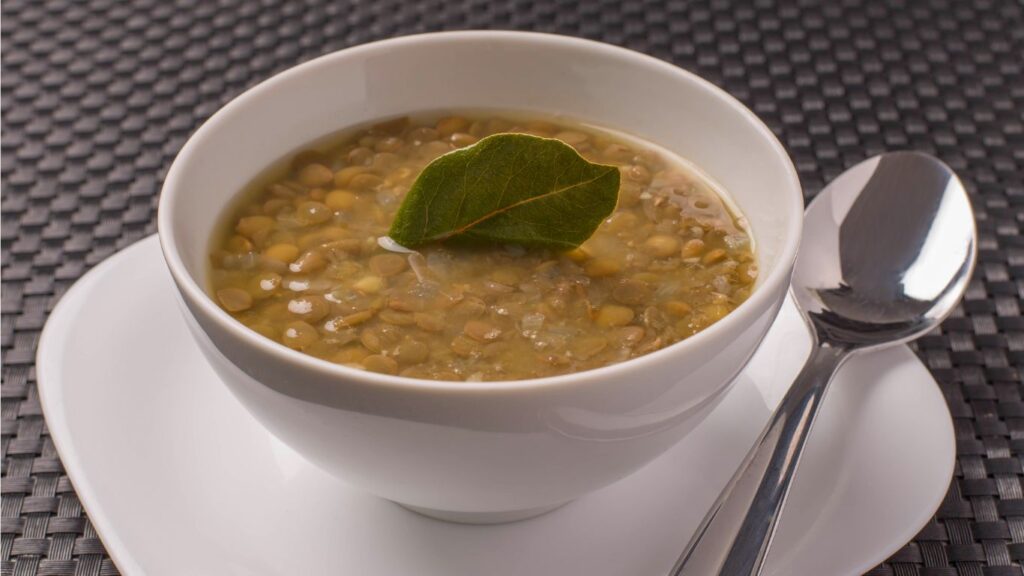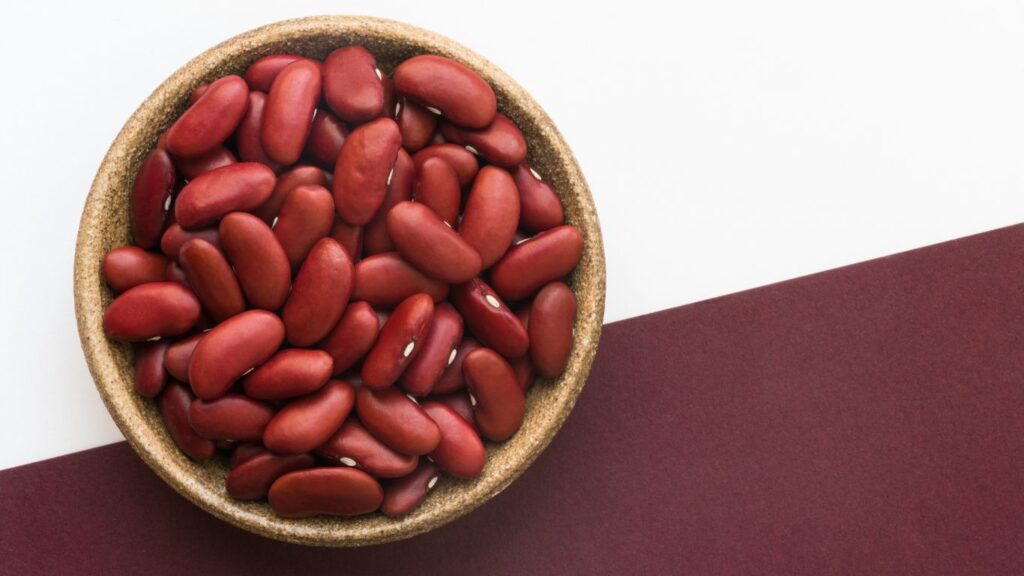Lentils and kidney beans are staples in diverse global cuisines, renowned for their versatility and nutritional richness. Lentils, small and lens-shaped, cook quickly and are essential in dishes like Indian dal, Middle Eastern salads, and Mediterranean soups. Kidney beans, named for their shape, are pivotal in Latin American stews, North American chili, and various hearty soups. Understanding their nutritional profiles is vital as both offer substantial health benefits, including high protein, fiber, and essential vitamins and minerals. This blog aims to delve into these profiles, comparing and analyzing the specific nutritional benefits of lentils and kidney beans. By contrasting their nutritional values, we can better understand how each can contribute to a balanced, healthful diet.
5 Signs of Poor Gut Health
Nutritional Profiles
| Nutrient | Lentils (per 100g cooked) | Kidney Beans (per 100g cooked) |
|---|---|---|
| Calories | 116 kcal | 127 kcal |
| Protein | 9.02 g | 8.67 g |
| Fiber | 7.9 g | 6.4 g |
| Vitamins and Minerals | ||
| Folate | 181 µg | 130 µg |
| Manganese | 0.49 mg | 0.38 mg |
| Iron | 3.33 mg | 2.94 mg |
| Potassium | 369 mg | 403 mg |
| Magnesium | N/A | 35 mg |
This table highlights the basic nutritional content of both lentils and kidney beans, focusing on their calories, protein, and fiber content, along with key vitamins and minerals. Lentils are particularly rich in folate and iron, making them a great choice for those needing to boost these nutrients in their diet. Kidney beans offer a good balance of potassium and magnesium, which are crucial for muscle and nerve function. Both legumes are excellent, nutrient-dense food choices for a healthy diet.
Health Benefits
Lentils:
Lentils are highly praised for their robust nutritional profile, particularly their high fiber and protein content. These elements not only support digestive health by promoting regular bowel movements and maintaining a healthy gut microbiome, but they also contribute to prolonged satiety. This feeling of fullness can aid in weight management by reducing the frequency of eating and decreasing overall caloric intake.

The folate found in lentils is indispensable, especially during pregnancy, as it plays a critical role in preventing neural tube defects and supporting general cellular function and DNA synthesis. Iron, another vital nutrient in lentils, is crucial for energy production and metabolism. It helps in the formation of hemoglobin in red blood cells, which transports oxygen throughout the body, thus supporting physical energy levels and cognitive functions. Overall, lentils are a powerhouse of nutrients essential for maintaining various aspects of health.
Kidney Beans:
Kidney beans are an excellent source of complex carbohydrates, which are key for sustained energy release. Unlike simple sugars, complex carbs provide a steady source of fuel, making kidney beans ideal for energy-intensive days or for those managing blood sugar levels. Furthermore, kidney beans are rich in potassium, a vital mineral that plays a crucial role in maintaining normal blood pressure. By balancing sodium levels and easing tension in the blood vessel walls, potassium helps to prevent hypertension and supports cardiovascular health.
Kidney beans possess significant antioxidant properties, thanks to their high content of flavonoids and other phytochemicals. These antioxidants combat oxidative stress and reduce the risk of chronic diseases by neutralizing harmful free radicals in the body. Overall, the nutritional benefits of kidney beans contribute to a robust, well-rounded diet, promoting long-term health and vitality.
Culinary Uses and Versatility
Lentils:
Lentils are celebrated for their convenience and ease of preparation, primarily because they do not require soaking prior to cooking—a notable advantage over many other legumes. Typically, lentils cook within 15 to 30 minutes depending on the variety, making them a quick and efficient choice for busy meal times. They are incredibly versatile in the kitchen, easily incorporated into a myriad of dishes. For instance, lentils are a staple in hearty, comforting soups and stews, where their texture adds satisfying depth. In salads, their nutty flavor complements a wide range of vegetables and dressings. Furthermore, lentils serve as excellent side dishes, often seasoned or tossed with herbs and spices, providing a nutritious and protein-rich addition to any meal.
Kidney Beans:
Kidney beans require careful preparation to ensure they are both palatable and safe to eat. Soaking them overnight not only reduces their cooking time but also diminishes their phytate content, which can inhibit mineral absorption and impact digestibility. Proper soaking, followed by thorough cooking, also neutralizes phytohaemagglutinin, a natural toxin found in raw kidney beans. Once prepared, kidney beans can be used in a variety of dishes. They are a key ingredient in robust, flavorful chili, often simmered with spices and meats or other vegetables. In curries, they absorb aromatic spices beautifully, adding texture and substance. Kidney beans also enhance mixed bean salads, contributing color, protein, and a satisfyingly smooth texture that pairs well with crisp vegetables and tangy dressings.

Dietary Considerations
Lentils:
Lentils are an excellent dietary staple across various eating plans due to their versatility and nutritional profile. They are inherently vegan and gluten-free, making them suitable for those following plant-based diets or managing celiac disease. Additionally, lentils have a low glycemic index (GI), which helps in maintaining stable blood sugar levels, beneficial for individuals with diabetes. Despite these advantages, it’s important to note that lentils can cause digestive issues for some people. They contain anti-nutrients like lectins and phytic acid, which can affect nutrient absorption and lead to gastrointestinal discomfort. Cooking lentils thoroughly can help reduce these compounds and improve digestibility. However, those with sensitive stomachs should introduce lentils into their diet gradually.
Kidney Beans:
Kidney beans must be properly prepared to ensure safety and enhance digestibility. They contain phytohaemagglutinin, a toxin that can cause severe gastrointestinal distress if the beans are undercooked or improperly handled. To neutralize this toxin, kidney beans should be soaked for at least five hours (or overnight) and then boiled vigorously for at least 10 minutes at the start of cooking. As for dietary considerations, kidney beans are moderately suitable for a ketogenic diet when consumed in controlled amounts. They have a relatively lower carbohydrate content compared to other legumes, which allows them to be incorporated into a keto diet, focusing on minimal carb intake. This makes them a viable option for those seeking to enjoy legumes while managing carbohydrate consumption.
Final Thoughts

Both lentils and kidney beans offer significant health benefits and nutritional value, each bringing unique attributes to the table. Lentils, with their quick cooking time and high folate content, are ideal for fast, nutritious meals, supporting digestive health and energy metabolism. Kidney beans, requiring more careful preparation, are rich in potassium and antioxidants, making them excellent for heart health and chronic disease prevention. Whether you choose lentils for their ease and protein-rich profile or kidney beans for their robust flavor and nutrient density, incorporating these legumes into your diet can contribute to a balanced and healthy lifestyle.
Also read: The Role of Kidney Beans in Managing Diabetes
